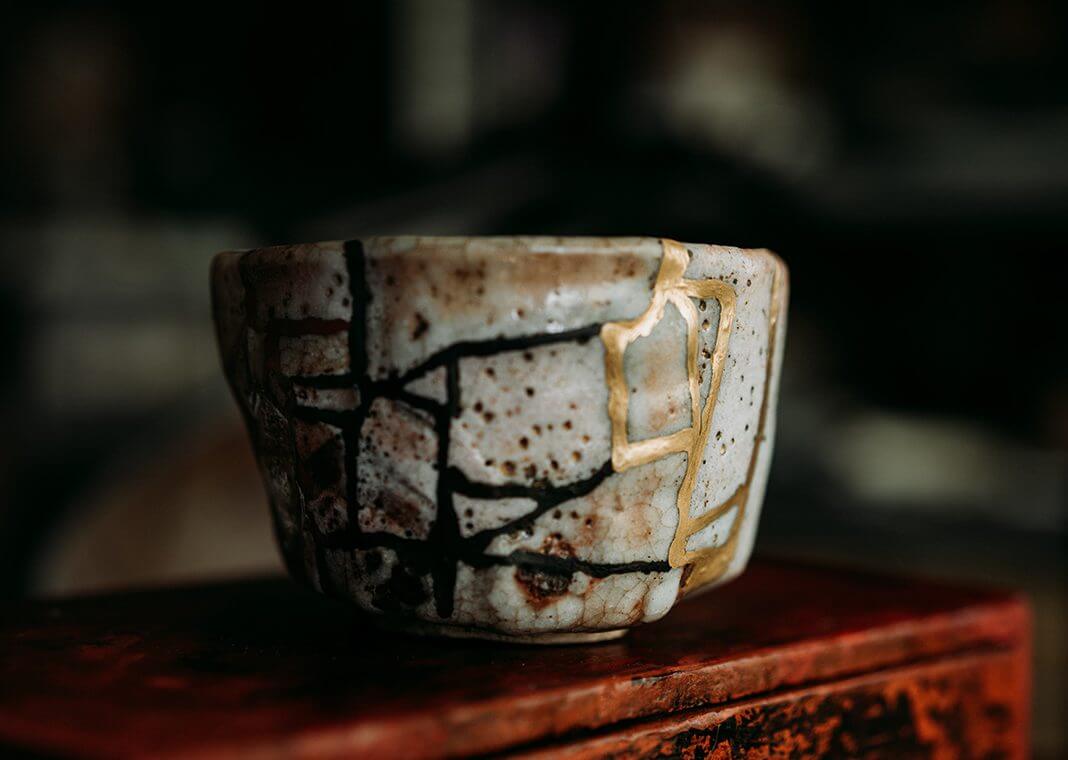
Recently, I started the Spiritual Exercises again, and one of the first readings I reflected on was from Jeremiah. In this passage (18:1–9), God explains how he can rework and remold the house of Israel like the potter reworks the clay. As I opened my Bible and read through this passage, I was struck by the image created in the first line. It says: “The vessel he was making of clay was spoiled in the potter’s hand, and he reworked it into another vessel, as seemed good to him.” (Jeremiah 18:4) At first, this image was comforting to me. If I mess up, if I sin, if I turn away from God, God can smash me down and return me to the ball of wet clay I started out as. Then, God can sit at the potter’s wheel again and build me back up into something brand new. I always have the chance to be completely re-created by God. Of course, then I looked at the note at the bottom of the passage: “The lesson of the potter is that God has the power to destroy or restore, changing his plans accordingly as these nations disobey him or fulfill his will.” Yikes. OK, less comforting.
As I sat with this image some more, however, I wondered about God as the Divine Potter. What does God do with creations that crack or break? When I fall, does God really grind me down into sand and start over again creating something new? Or does God repair me?
I imagine God repairs me. I imagine God has done so many times already, in fact. I imagine God repairs all of us.
Recently, I came across an image on Instagram of a repaired clay cup. The cup had been dropped on the ground. Instead of getting rid of the cup or grinding it down into sand to be used for another purpose, someone had fixed it. The repairer had glued the pieces of the cup back together with some kind of adhesive that looked like gold. The image was captured in just enough light that the cracks glittered and stood out glowing against the pale, muted blue of the cup.
I later discovered this kind of repair had a name. The art of repairing broken pottery in this way is called Kintsugi. It’s a centuries-old Japanese art. Practitioners put the broken pieces together with a special tree sap lacquer that is dusted with gold, silver, or platinum, creating unique and beautiful new pieces out of what was once broken. In Kintsugi, the cracks still show. In fact, they are meant to show. This really struck me, because I know whenever I have repaired something in the past, my goal has always been to make the cracks invisible. I want to hide the broken pieces and forget how they came to be broken in the first place. In this art form, however, it is the flaws and the cracks that are highlighted. They are made bolder, shinier, more prominent. They become the focus, a reminder that the flaws and imperfections are a necessary and important part of the story of the piece.
What if we considered the Divine Potter as a master of Kintsugi?
Imaginative Exercise
Imagine for a minute God sitting at the potter’s wheel, hands wet with clay, forming you. There God is, taking time to make each curve and line special. Then, God walks over to the kiln and fires you. Every unique element is now solidified in a finished product. But then, as God puts you out into the world, you get a little beat up along the way. First small chips form. Then much larger cracks form as you age and grow and encounter more life experiences. Now imagine that every time God holds you, God rubs a thumb over each crack and takes time to examine each chip. Then, God stirs up a cup of gold adhesive and carefully repairs you. Finally, God places you in the sunlight and watches as every chip and crack that has made you who you are sparkles and shines.
Photo by Motoki Tonn on Unsplash.

Makes me want to ‘ throw ‘ a pot again
Thank you
Thanks Gretchen. Superb piece of writing. Very helpful imaginative exercise.
Thank you for this!
Thank you for your beautiful writing! I always find your articles insightful and inspiring. The image of the potter reminds me of being ‘knit in your mother’s womb’ from Psalm 139, God as a loving craftsman.
A beautiful new way of looking at God looking at me. Thank you!
Wonderful article Gretchen, extremely inspiring. Many thanks,
Yes, thank you, Gretchen. This brought tears to my eyes. I love this image of the Divine Repairer !
Beautiful imagery Gretchen. I attended Mass last evening and one of the songs on our song sheet was “The Potter’s Hand”.
Thank you Gretchen for the wonderful imagery and meditation in this piece. You are truly gifted. Look forward to more of your stories.
Thank you for the hope giving sharing
What a beautiful piece you have written. I found it moving.
I will go show it to my husband. X
I love this analogy, thanks for sharing, it helps put things into perspective for myself and for others.
What a wonderful analogy! I will carry it with me!
Thank you for sharing this!
Today, instead of thinking that after 75 years, I still fall back on the same destructive patterns, I will focus on God’s repair of me and how, with my help of His grace, I am slowly becoming more beautiful in his eyes.
Thank you! Beautiful inspiration and thoughts today!